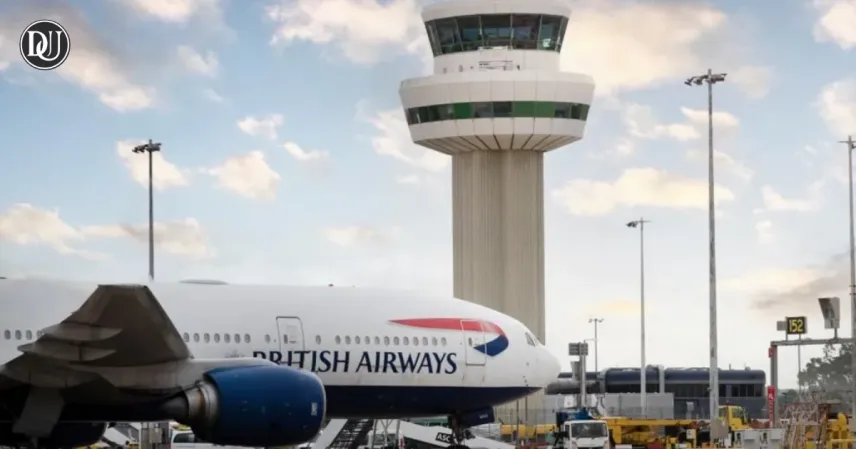What started as an ordinary day at London Gatwick Airport quickly turned into a moment of panic for passengers aboard a British Airways flight bound for Vancouver. The plane, a Boeing 777, had already begun its takeoff run. People were likely settling into their seats, thinking about vacation plans, business trips, or simply looking forward to seeing loved ones.
Then, in the blink of an eye, everything changed.
🛑 An Abrupt Stop That Nobody Expected
Just as the aircraft picked up speed, something went wrong. The jet, full of passengers and hope, suddenly screeched to a halt. The tires screamed, smoke filled the air, and the smell of burning rubber reached the cabin. Passengers were jolted forward, seatbelts tightening around them. Panic set in as emergency vehicles rushed toward the aircraft.
It wasn’t a terrorist attack. It wasn’t a technical failure.
It was a simple human error—a slip of the hand during one of the most critical moments of flight.
🧠 A Small Mistake, A Big Consequence
The co-pilot of the British Airways flight, despite being experienced and well-trained, accidentally pulled back the engine thrust levers instead of pulling back the control column to lift the plane. This minor motion, made under pressure and habit, cut the engine power and forced the aircraft to slam on its brakes.
The result? The brakes overheated, a fire broke out on the landing gear, and the takeoff was canceled instantly. For the people on board, it felt like something far more serious.
👩✈️ Pilots Are Human Too
We often forget that the pilots flying massive aircrafts like those of British Airways are human, just like us. They can make mistakes—especially when pressure, routine, and reaction collide. This incident reminds us of the fine line between a smooth flight and an emergency.
It’s not about blaming the crew. It's about acknowledging that even in high-stakes environments, our minds sometimes work on autopilot, leading to action slips—where one muscle memory takes over another.
🚒 Fire, Fear, and Fast Reactions
Within moments of the emergency stop, flames appeared on one side of the plane. But thankfully, airport firefighters responded with lightning speed. Passengers were not evacuated, and the situation was brought under control before anyone got hurt. The professionalism and calm of the British Airways crew likely played a big role in keeping fear from turning into chaos.
That said, the emotional toll on the passengers was real. Imagine being seated, seconds from takeoff, and suddenly feeling the plane grind to a halt, followed by the sight of emergency crews swarming around your aircraft.
🌍 The Ripple Effect of a Moment
While no one was physically harmed, the incident did cause widespread disruptions. Gatwick’s main runway was shut down temporarily, affecting other flights and thousands of passengers. Missed connections, canceled vacations, delayed reunions—it’s a ripple effect that shows how one small error can affect so many lives.
Still, British Airways remained composed, focused on safety first, offering apologies and ensuring that passengers were rebooked or refunded.
✨ The Bigger Picture: Learning and Trust
This story isn’t just about an error. It’s about the systems in place that caught the mistake, the training that ensured no one panicked, and the swift actions that prevented a tragedy.
British Airways is known for its high safety standards, and this event—though alarming—proved that those standards hold strong when they matter most. It's a chance for every airline and every pilot to reflect, retrain, and reinforce habits that save lives.
❤️ Gratitude and Reflection
At the end of the day, everyone on that flight walked away safely. No lives were lost, and no one was injured. That’s the biggest takeaway. And while it may take some passengers time to feel comfortable flying again, the grace with which British Airways handled this emergency may offer some comfort.
In moments like this, we are reminded how fragile life is, and how much we trust those who fly us across skies and oceans. We put our faith in those uniforms, in those wings, and in the systems that keep us airborne.
British Airways, despite the scare, walked away with a powerful reminder: safety is everything. And even in the face of human error, quick thinking and trained hands can save hundreds of lives.










